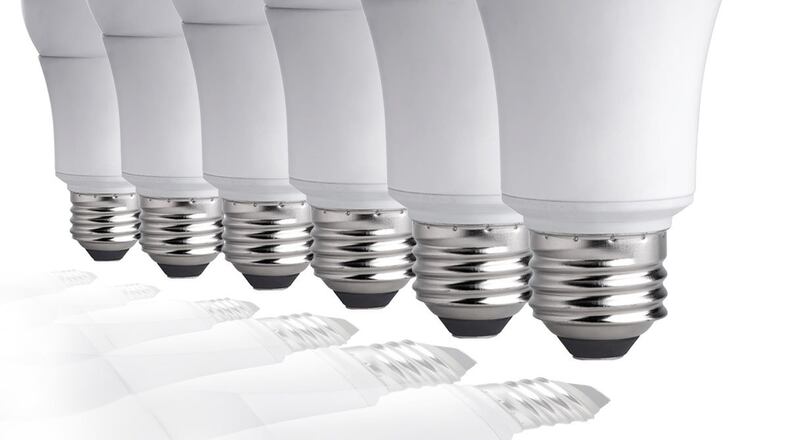Are savings from using energy-efficient bulbs worth the money? First, it helps to understand the basic versions of home lighting options.
They are:
- Fluorescent, including linear fluorescent lamps/Circline lamps and compact fluorescent lamps.
- Incandescent, including mercury vapor lamps, metal halide lamps and high-pressure sodium lamps.
- Outdoor solar, including standard incandescent (A-type) lamps, energy-saving incandescent (halogen) lamps and reflector lamps.
- Light-emitting diode (LED).
Cost savings
Switching from an incandescent bulb to a light-emitting diode (LED) light can save about $13 a year if the LED is used at least five hours a day, according to Money Talks News.
Incandescent bulbs cost about 50 cents each, while an LED bulb costs around $20. Exchanging your least-used bulbs - ones that are on for maybe only 30 minutes a day - results in savings of about $1.20 per year.
EnergyStar persuasion
However, a different story is told by EnergyStar: if all Americans replaced their inefficient light bulbs with ENERGY STAR-certified LED bulbs, they would save $1.5 billion in annual energy bills and prevent 17 billion pounds of carbon pollution annually.
LED bulbs are now an affordable option for the average consumer, with prices at around $2 per bulb across the country (and as low as $1 in many areas). Using less energy, the bulbs pay for themselves in a matter of months and can save households $50 to $100 each year in utility costs.
By 2020, the federal government expects to see widespread adoption of LED bulbs, as utility programs across the country educate consumers about the energy-efficient options that are available and continue to offer rebates on the bulbs.
Today, 71 percent of homes have no LED bulbs in use and most consumers have little knowledge about the various light bulb options. The average American home contains around 50 light sockets and about 60 percent of them still contain an inefficient bulb, according to EnergyStar.
LED bulbs that have earned the government-backed ENERGY STAR label are independently certified, undergoing extensive testing to ensure they save energy, deliver on brightness and work the way consumers expect. Bulbs that have earned the ENERGY STAR use 70 to 90 percent less energy than incandescent bulbs and last at least 15 times longer.
Health risks
If you're sensitive to light, those savings might not be worth the painful headaches that can be caused by LED bulbs.
Arnold Wilkins, professor of psychology at the University of Essex, in the United Kingdom, said LED light bulbs switch on and off hundreds of times every second, leading to disruption of movement control of the eyes and causing double or multiple vision. Headache risks also double while reading with a flickering LED light bulb.
LED bulbs are also capable of inducing feelings of dizziness and pain within 20 minutes of turning them on.
About the Author
Keep Reading
The Latest
Featured


